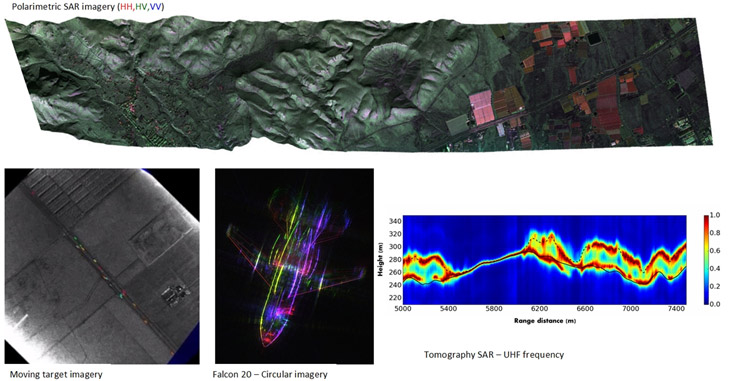- ONERA
- Scientific Departments
- DEMR - Electromagnetism and Radar
- Research units
DEMR - Research units
CAT | CME | EGDR | EXA | MATS | PER | SEM | SRM | TERE
Sensors, antennas and microwave technologies (CAT)
The mission of the "Sensors, antennas and microwave technologies" unit is the development and implementation of compact radar and electromagnetic sensors for onboard applications on small UAVs and for fixed and tactical ground surveillance systems (sensors deployable on the ground, aerostat-based system, etc.). It also includes the associated processing (radar detection, MIMO technique, near-field imaging, etc.). Its fields of activity cover as well the development of antennas for these sensors and for other applications (communications, etc.), and the design of radomes. These activities are based in particular on the use of proprietary and COTS modeling tools, antenna measurement bases (VHF to Q bands) and a set of material characterization benches (2-60 GHz band).
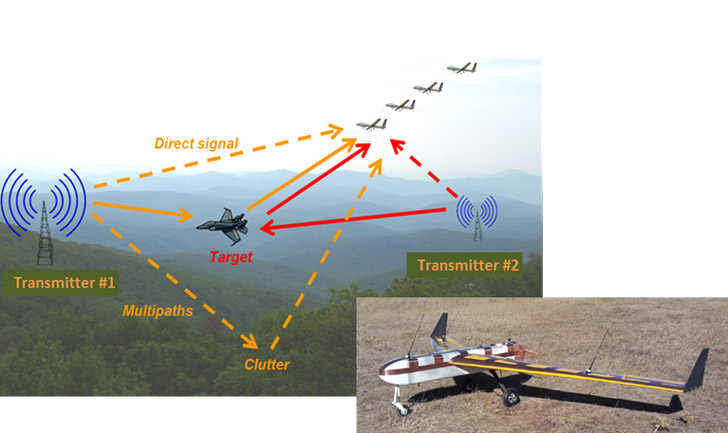
Passive aerial surveillance radar on swarm of drones - Drone and onboard radar sensor” à remplacer par : “Multistatic Passive Radar using Multiple Coordinated UAVs – Drone with onboard radar sensor

Q-band Fabry-Pérot cavity antenna modeling and mock up prototype
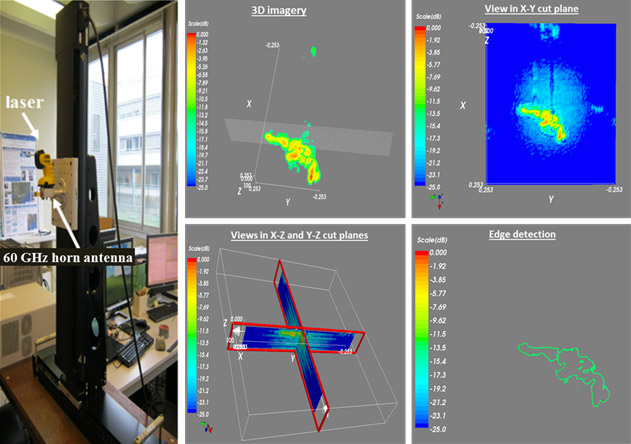
V-band test bench for 3D electromagnetic imagery
Electromagnetic compatibility and modeling (CME)
"Electromagnetic compatibility and modeling" (CME) consolidates ONERA's skills in the field of the electromagnetic effects of natural origin (indirect effects of lightning) or artificial origin (inter-and intra-system EMC, high intensity radiated fields) on electronic equipment, wiring and systems architectures, and the associated means of protection. Its two main activities are:
- Development of electromagnetic models in calculation codes
- Study and implementation of innovative experimental methods
It makes available its expertise in the fields of civil and military aeronautics, space and defense systems. It applies as well its skills for the benefit of industry outside of these areas.
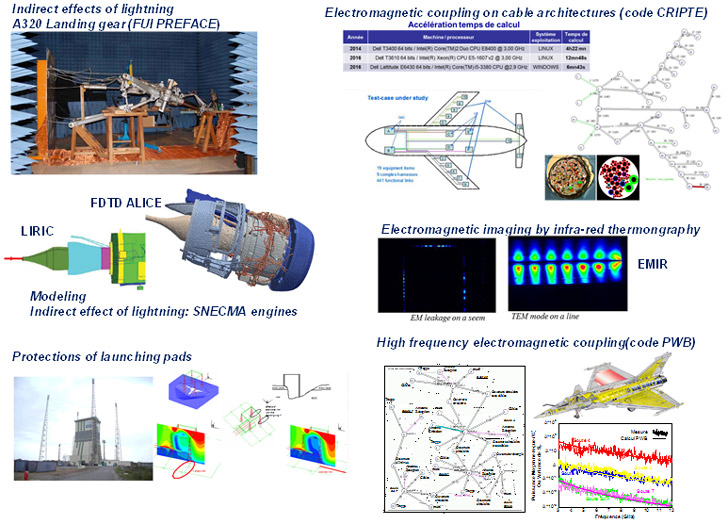
Experimentation and large radar demonstrators (EGDR)
EGDR is responsible for designing, producing and testing terrestrial radar breadboards or demonstrators using phased antennas arrays for coastal surveillance, long range aerial monitoring, early warning or space surveillance applications. It covers a frequency range from HF band to L-band. It also conducts upstream studies related to this frequency domain (physics of surface waves and skywaves, waveforms and processing, etc.).
The unit is in charge of NOSTRADAMUS facilities (a skywave HF radar) and of a scalable demonstrator of HF surface wave radar.
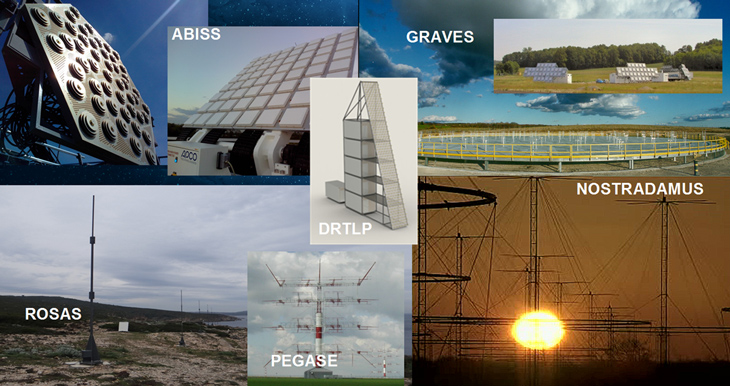
Airborne studies and tests (EXA)
The EXA unit is specialized in passive or active airborne radar systems. It is therefore tasked for designing, developing and implementing onboard airborne radar sensors in its test resources: Busard and SETHI/RAMSES NG. These resources are essentially dedicated to airborne radar imaging and to associated techniques, but also to Electronic Warfare applications. Research into new technologies and/or new concepts for airborne radar also falls within its scope.
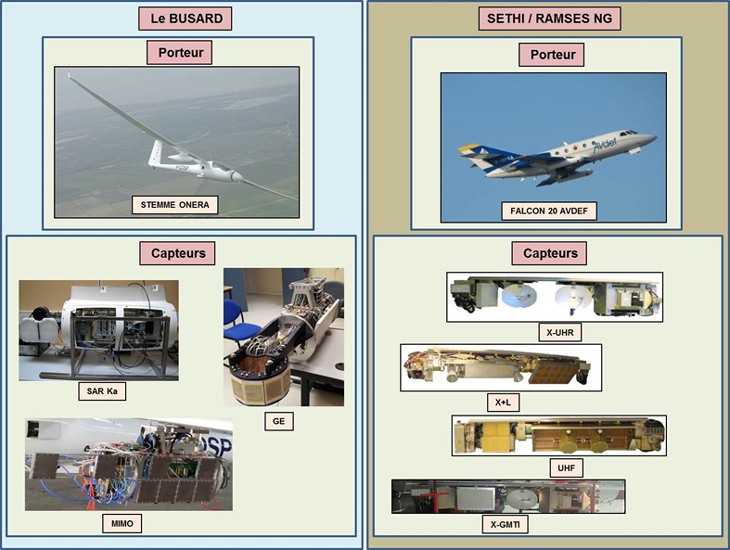
The experimental airborne radar resources of the EXA unit
Signal Processing Advanced Methods (MATS)
The Signal Processing Advanced Methods (MATS) unit develops, studies and assesses emerging and innovative techniques for radar signal and information processing (with applications such as detection, localization, tracking, recognition, and so on), as well as Electronic Warfare. The next step is then prototyping on breadboards developed by the department, so that these techniques can ultimately be transferred to operational systems. MATS is also in charge of developing and exploiting passive radar systems.
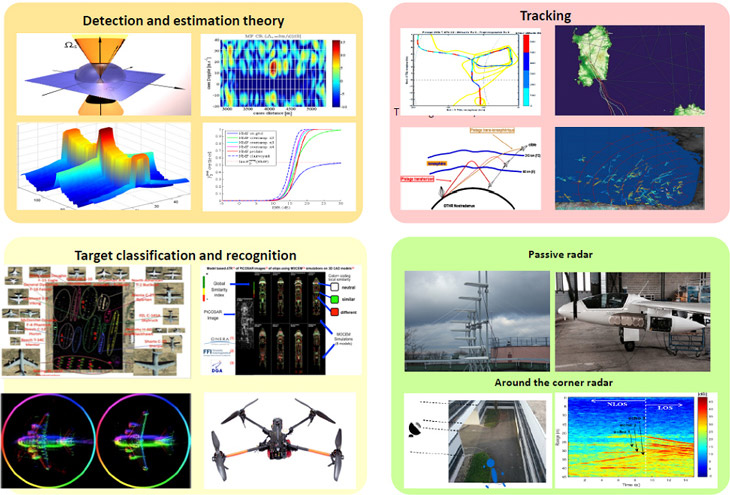
Propagation, Environment and Radiocommunications (PER)
PER studies the effects of the environment on radio communication systems (radar, electronic warfare, radio navigation, telecommunications). Its activities involve characterizing the EM environment, modeling physical phenomena, developing innovative processing techniques. It also develops and validates simulators for assessing the performance of these systems in their physical or radio environment.
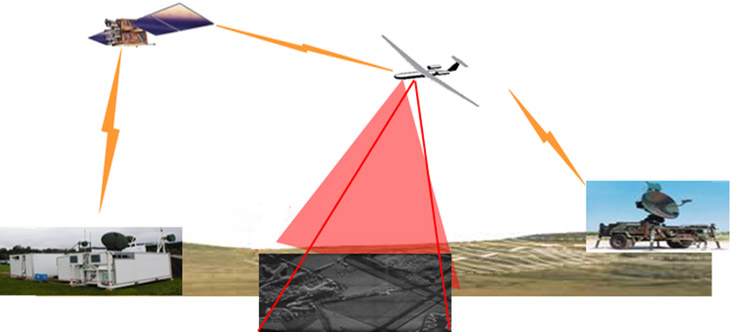
Simulation, Environment and Modeling (SEM)
The "Simulation, Environments and Modeling" unit is responsible for the conception and development of simulation tools for radar or electronic warfare applications. These simulations take into account all entities that have an influence on the sensors performance. They also enable ONERA and defense manufacturers, in the upstream phase, to assess new concepts and, in an operational context, to provide input for the equipment assessment and qualification process.
More specifically, the unit carries out electromagnetic modeling activities related to target signature calculations and stealth.
Another topic of interest is the assessment of radar interference from wind turbines.
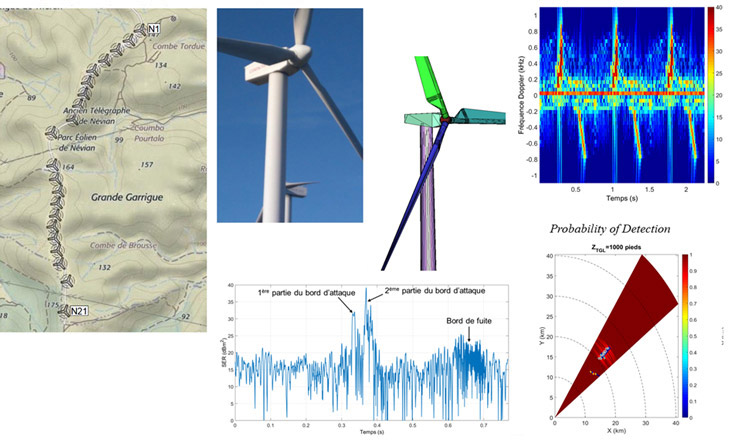
Radar simulation on a wind farm
Radar and signature measurement systems (SRM)
The “Radar and Signature Measurement systems” unit is involved in studies of new surface radar concepts and in the design of test beds for high resolution dynamic signature measurement (aircraft in flight, ballistic missile, UAV, wind turbines, sea clutter …). Its wide range of skills from microwave, digital systems, signal processing, to RF metrology, enables this unit to handle various technology breakthroughs.
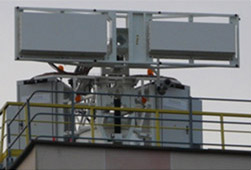
HYCAM
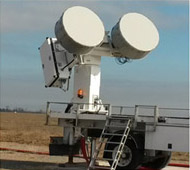
PRISME
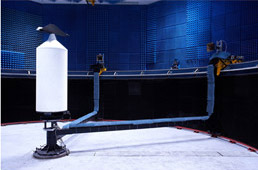
Measurement system BABI
SAR processing and Remote Sensing (TERE)
The "SAR processing and Remote Sensing" unit leads research in the field of SAR (Synthetic Aperture Radar) imaging, for airborne or satellite sensors. It is in charge of processing data from the department's airborne sensors (airplanes or drones), of the study of new concepts, of conducting expert assessments in the field of embedded radar, for defense and civil applications of SAR imaging.
